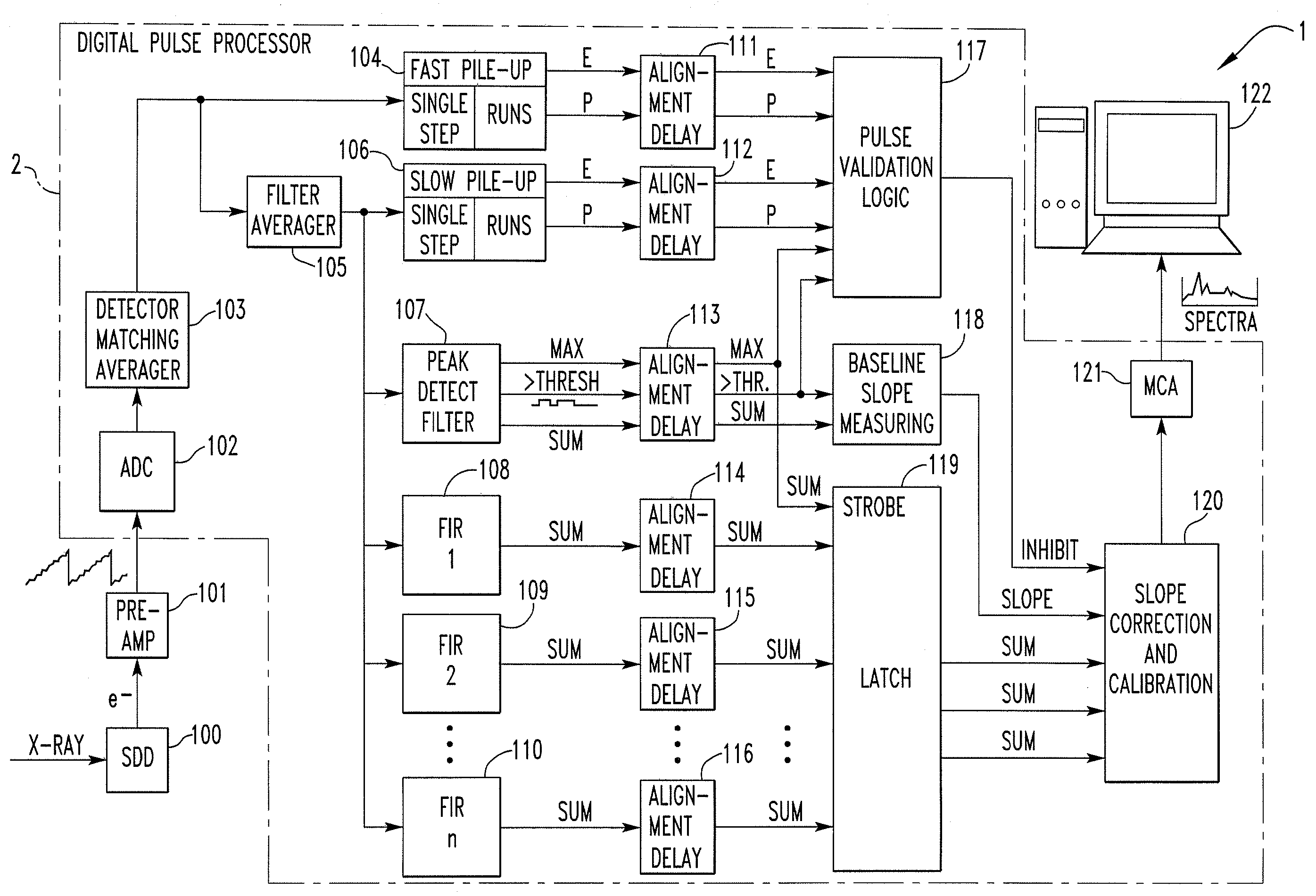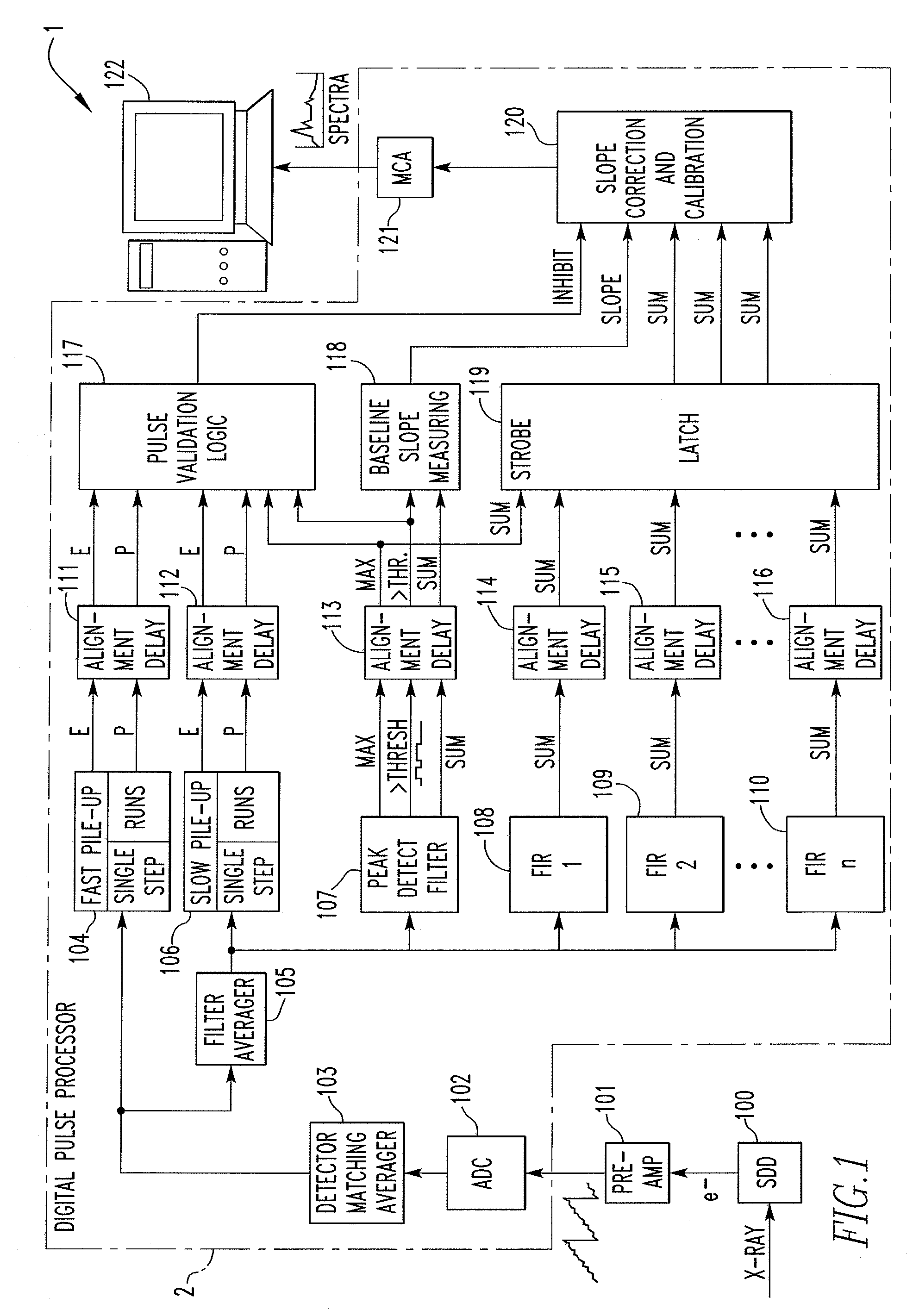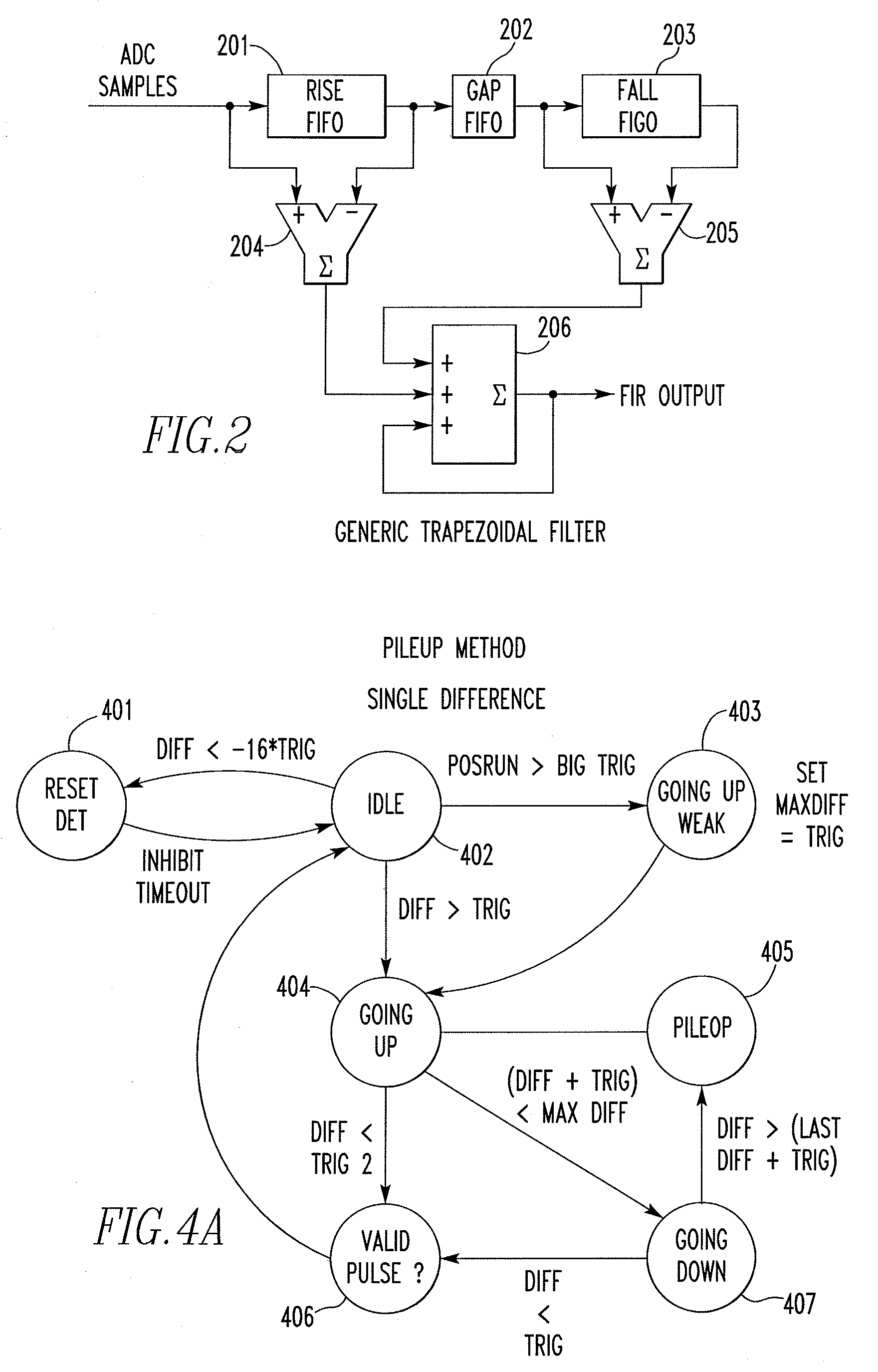Pileup rejection in an energy-dispersive radiation spectrometry system
a radiation spectrometry and energy-dispersive technology, applied in the direction of optical radiation measurement, pulse characteristics measurement, instruments, etc., can solve the problems of pile up rejection, rise time, and step in the preamplifier output that is not instantaneous, and achieve the effect of full efficiency
- Summary
- Abstract
- Description
- Claims
- Application Information
AI Technical Summary
Benefits of technology
Problems solved by technology
Method used
Image
Examples
Embodiment Construction
[0034]As noted in the Background of the Invention, the subject matter described herein applies to both tail pulse and pulsed reset preamplifiers. However, for ease of illustration and description, invention will be described in connection with embodiments that employ a pulsed reset type preamplifier. As discussed in the Background of the Invention, the rising portion of the detector voltage step signal is passed through a tail pulse type preamplifier relatively unchanged. As a result, it will be appreciated from the description for the pulsed-reset embodiment that the invention described herein may readily be applied to a tail pulse preamplifier embodiment. In addition, the subject matter described herein applies to energy-dispersive radiation spectrometry systems generally. However, for ease of illustration and description, the invention will be described in connection with embodiments that employ an X-ray spectrometry system. This is not to be considered to be limiting, and it is ...
PUM
 Login to View More
Login to View More Abstract
Description
Claims
Application Information
 Login to View More
Login to View More - R&D
- Intellectual Property
- Life Sciences
- Materials
- Tech Scout
- Unparalleled Data Quality
- Higher Quality Content
- 60% Fewer Hallucinations
Browse by: Latest US Patents, China's latest patents, Technical Efficacy Thesaurus, Application Domain, Technology Topic, Popular Technical Reports.
© 2025 PatSnap. All rights reserved.Legal|Privacy policy|Modern Slavery Act Transparency Statement|Sitemap|About US| Contact US: help@patsnap.com



